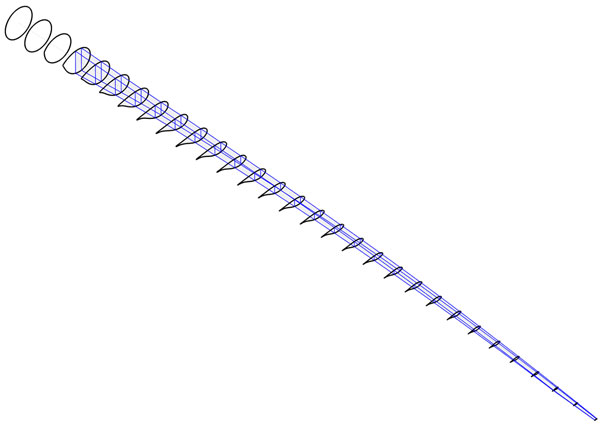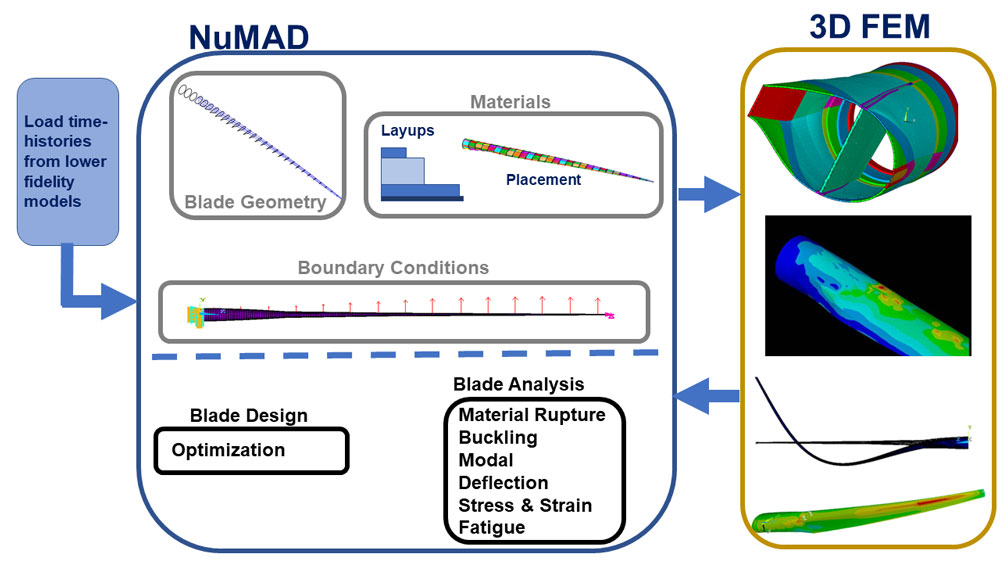
Researchers from Sandia’s wind energy program have released a new version of the software tool Numerical Manufacturing and Design, or NuMAD, for the structural design and modeling of wind turbine blades.
NuMAD version 3.0, which was funded by DOE’s Wind Energy Technologies Office, is an object-oriented, open-source software program written in the MATLAB programming language that simplifies the process of creating a 3D model of a wind turbine blade. The tool manages all blade information, including aerodynamic properties, material properties and material placement. Blade data can be modified by a structural optimizer in NuMAD, or it can be used to run other tools in a stand-alone mode.
When used in conjunction with these other tools, NuMAD can provide computation of blade cross-section properties, various structural analyses and estimation of blade aeroelastic instability.
“Automation summarizes the capabilities of the new version,” said project lead Ernesto Camarena. “The newly released NuMAD is structured to run from a scripting environment and can easily be called by computer design procedures that pick the best material layouts, while minimizing blade weight.” Ernesto said this process can be done with minimal user intervention, and the trial-and-error approach required by prior versions of NuMAD is no longer an issue.

Users also have the added flexibility to create blade models from data found in the International Energy Agency Wind Task 37 Blade Ontology to efficiently collaborate with other organizations that use different tools but are modeling the same blade.
“The update still retains the use of a graphical user interface, but also provides flexibility to upload specific file types with blade parameters,” Ernesto said.
The latest NuMAD version and the highly flexible blade designs are now available on GitHub, a cloud-based software development host site that can track source code history. The NuMAD team, including Ernesto, principal investigator Josh Paquette and Sandia wind-program researchers Evan Anderson and Ryan Clarke, said their aim is to build a NuMAD community, including national laboratories, university researchers, students, manufacturers and others, such as wind plant owners.
